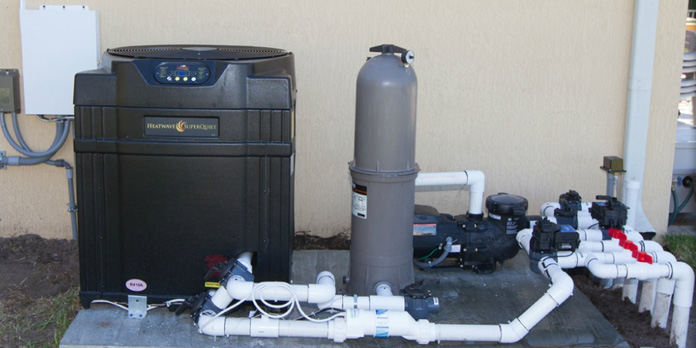The heat pumps for their installation do not need special constructions or infrastructure; they are designed to be installed in the pipes or electrical networks that are already in use. They work outdoors since they transfer heat from the environment to heat the water.
- They are safer
- There is no danger of gases
- You do not need a fuel tank
- It does not emit polluting fumes
- It does not emit amounts greater than 6% of CO2
- They are more comfortable
- Being able to use your Pool between two and four more months of the bathing season (depending on the geographical situation).
Heat pumps usually are installed outdoors, either next to the machine room, on rooftops, or next to the swimming pools; this is because they must make the most of the ambient temperature, and if they are enclosed in machine rooms, they will cool it down since when they work they expel cold air that would cool the room and seriously limit the efficiency of the heat pumps to the point of shutting them down since we would reach temperatures below 4 ° C.
It is essential always to consider two points. The water must arrive filtered to the equipment, and the heat pump must be electrically insulated. If this is not the case, the equipment, when operating, will produce electrolysis that seriously damages the heat exchanger since it would perforate it.
Outdoor Facilities:
Considering that the heat pump works by obtaining heat or pumping heat from the ambient air, the unit must be located to have the maximum amount of airflow. A minimum distance of half a meter from any surrounding obstacle should be respected and also a minimum of two meters of free space from the top.
Indoor Facilities:
When the heat pump is installed indoors, it is critical to have the necessary ventilation to allow air to pass through. The fan will disperse more than 7,000 m3 of air every hour. Therefore, we have to allow this volume of air to enter the room where it is located.


